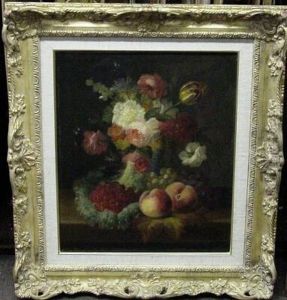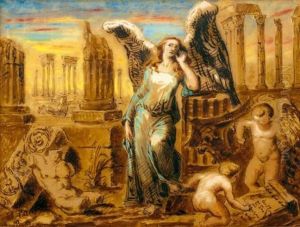Achille Augustin Calon Paintings
Achille Augustin Calon, born in 1813 and passing in 1902, was a French artist whose work, though not widely known in the contemporary mainstream art history, provides a fascinating glimpse into the artistic movements and sensibilities of 19th-century France. His life and career were marked by the turbulent political and social upheavals of his time, which influenced the themes and styles of his work. Calon's body of work spans various mediums, including painting, drawing, and printmaking, reflecting the versatile artistic practices of the era.
Calon was born into an era where Romanticism was giving way to Realism, and later, Impressionism began to take root. This period was characterized by a shift in focus from the idealized to the more ordinary and real, a change that is reflected in the evolution of Calon's own artistic style. Initially, his work displayed the dramatic themes and emphasis on emotion typical of Romantic art, but as his career progressed, his work began to show an increasing interest in capturing everyday life, indicative of the Realist movement. Despite this, Calon's work retained a certain romantic quality, blending elements of both movements to create his unique style.
Throughout his life, Calon was deeply engaged with the artistic community in France, participating in the Salons that were the heart of the French art world at the time. These exhibitions were crucial for artists seeking recognition and patronage, and Calon's participation in them demonstrates his active involvement in the contemporary art scene. However, unlike some of his more famous contemporaries, Calon did not achieve widespread fame during his lifetime. His works were appreciated within certain circles but did not gain the recognition or commercial success of artists like Eugène Delacroix or Gustave Courbet.
After his death in 1902, Calon's work fell into relative obscurity, overshadowed by the burgeoning Impressionist movement and the radical changes it brought to the art world. Today, scholars and enthusiasts of 19th-century French art are beginning to reevaluate his contribution, recognizing him as an important figure who bridged the gap between Romanticism and Realism. His work offers valuable insights into the transitional period of French art, reflecting the complexities and nuances of a time marked by significant cultural and artistic shifts.

